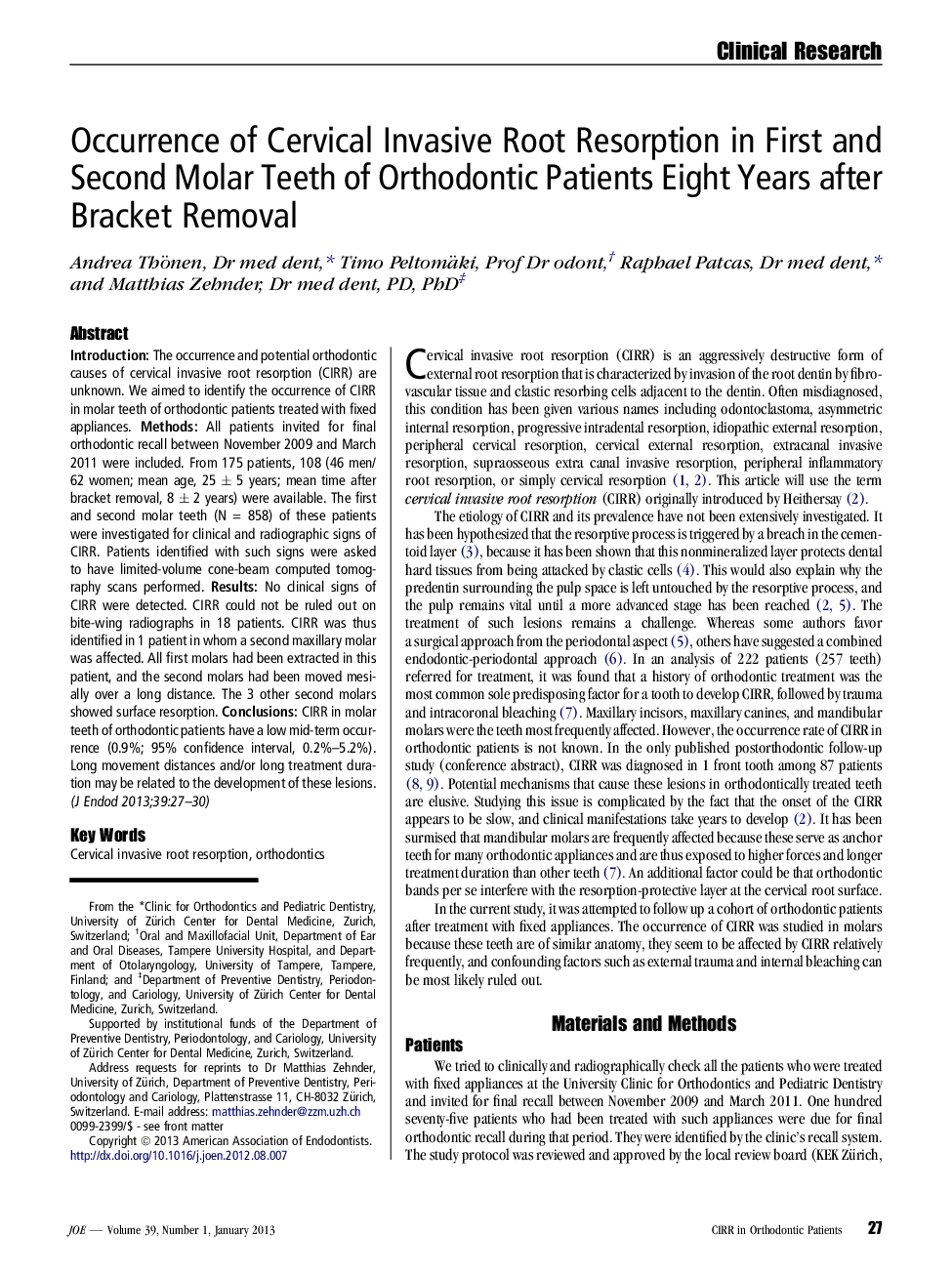| Article ID | Journal | Published Year | Pages | File Type |
|---|---|---|---|---|
| 3148629 | Journal of Endodontics | 2013 | 4 Pages |
IntroductionThe occurrence and potential orthodontic causes of cervical invasive root resorption (CIRR) are unknown. We aimed to identify the occurrence of CIRR in molar teeth of orthodontic patients treated with fixed appliances.MethodsAll patients invited for final orthodontic recall between November 2009 and March 2011 were included. From 175 patients, 108 (46 men/62 women; mean age, 25 ± 5 years; mean time after bracket removal, 8 ± 2 years) were available. The first and second molar teeth (N = 858) of these patients were investigated for clinical and radiographic signs of CIRR. Patients identified with such signs were asked to have limited-volume cone-beam computed tomography scans performed.ResultsNo clinical signs of CIRR were detected. CIRR could not be ruled out on bite-wing radiographs in 18 patients. CIRR was thus identified in 1 patient in whom a second maxillary molar was affected. All first molars had been extracted in this patient, and the second molars had been moved mesially over a long distance. The 3 other second molars showed surface resorption.ConclusionsCIRR in molar teeth of orthodontic patients have a low mid-term occurrence (0.9%; 95% confidence interval, 0.2%–5.2%). Long movement distances and/or long treatment duration may be related to the development of these lesions.
